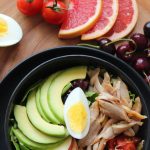Your body is capable of so much. Like a well-oiled machine it keeps your blood pumping and your organs working, but even machines require a little grease now and then. Vitamins and minerals are essential for keeping everything in working order. These nutrients help your body perform on a daily basis. Too much or too little of these additives can be detrimental. But what are vitamins and minerals? Vitamins and minerals are both known as micronutrients, because your body only needs a small amount. Failing to consume micronutrients can cause vitamin and mineral deficiency-related diseases. There are at least 30 essential nutrients your body requires that it cannot make on its own. What is the difference between vitamins and minerals? The difference comes from their basic structure.
- Vitamins are organic structures that can be broken apart by heat, air, or acid. The fragile nature of vitamins means they can become inactive simply through cooking, storage and air exposure.
- Fat-Soluble Vitamins: These are vitamins that mesh with the fat in your body rather than flowing through the bloodstream. Fat-soluble vitamins are held in the fat tissues and liver and released when needed. Micronutrients in this category such as vitamin A, D, E and K help build bones protect vision and protect the body.
- Water-Soluble Vitamins: These micronutrients are dispersed through the watery foods you eat and are absorbed into the bloodstream during digestion. These vitamins circulate easily through the body and are regulated by the kidneys. Water-soluble vitals include biotin, folic acid, riboflavin and vitamin B12. They are good for releasing and producing energy, building proteins and making collagen.
- Minerals, on the other hand, are inorganic and maintain their chemical structure. Even though minerals are inorganic it is easier to consume them, as they find their way in through plants, fish, animals and fluids.
Vitamins and Minerals in Food
It’s time to make your grocery list, but where to begin? Here is a breakdown of where to find specific vitamins and mineral:
- Fat-soluble vitamins (vitamin A, D, E and K): Animal fat, vegetable oil, dairy, liver, oily fish.
- Water-soluble vitamins: (vitamin C and B, folic acid): Fruits and vegetables, grains, milk, dairy.
- Minerals: Meat, cereals, fish, milk, nuts.
Vitamin and Mineral Supplements
It seems an easy choice to reach for vitamin and mineral supplements if you aren’t meeting your micronutrients quota, but be careful. Too much of anything can be a bad thing, so make sure that if you are taking vitamin or mineral supplements you talk to your doctor first. Some people may benefit from or require vitamin and mineral supplements more than others. For example:
- Pregnant women.
- Women who are breastfeeding.
- Alcoholics.
- Cigarette smokers.
- Illegal drug users.
- The elderly.
- Vegetarians or vegans.
- Women who bleed excessively during menstruation.
- People with food allergies.
It is recommended to get your vitamins and minerals in food form over pill form, as it is shown to provide stronger benefits. Remember –overuse of supplements can lead to health problems such as:
- Large doses of fish oil can lead to blood clotting.
- Iron toxicity can cause bowel problems.
- Overdosing on vitamin A may cause birth defects.
- A high level of vitamin B6 has been linked to nerve damage.
Talk to your doctor before taking any supplement or if you experience side effects.
Vitamin and Mineral Deficiency Diseases
Since the body cannot naturally produce micronutrients, failure to consume the right amount can have dire consequences. At least half of children worldwide ages six months to five years old and more than two billion people worldwide suffer from one or more micronutrient deficiency. The most essential vitamins and minerals, according to the Centers for Disease Control and Prevention (CDC), include iron, iodine, vitamin A, folate and zinc. If you are experiencing symptoms of a vitamin and mineral deficiency, talk to your doctor about taking a blood test for vitamin and mineral levels. Your doctor can take a small blood sample to measure your red and white blood cells. The following vitamin and mineral deficiency symptoms chart was created using information from a larger chart provided by the United States Department of Agriculture:
| Nutrient | Function | Deficiency Symptoms | Toxicity Symptoms | Major Food Sources |
|
Iron |
Essential for the formation of hemoglobin and oxygen trans- port; increases resistance to infection; functions as part of enzymes involved in tissue respiration | Hypochromic microcytic ane- mia; malabsorption; irritability; anorexia; pallor, lethargy | Hemochromatosis; hemosidero- sis. | Breast milk; infant formula; meat; liver; legumes; whole- grain breads, cereals, or forti- ed or enriched grain products; and dark green vegetables |
| Iodine | Helps regulate thyroid hor- mones; important in regulation of cellular oxidation and growth | Endemic goiter; depressed thy- roid function; cretinism | Possible thyroid enlargement | Breast milk, infant formula, seafood, iodized salt |
| Vitamin A | Preserves integrity of epithelial cells; formation of rhodopsin for vision in dim light; necessary for wound healing, growth, and normal immune function | Night blindness, dry eyes, poor bone growth, impaired resis- tance to infection, papillary hyperkeratosis of the skin | Fatigue; night sweats; vertigo; headache; dry and skin; lips; hyperpigmentation; retarded growth; bone pain; abdominal pain; vomiting; jaundice; hypercalcemia | Breast milk, infant formula, liver, egg yolk, dark green and deep yellow vegetables and fruits |
| Folate | Essential in the biosynthesis of nucleic acids; necessary for the normal maturation of red blood cells | Poor growth; megaloblastic anemia (concurrent de ciency of vitamin B12 should be suspected); impaired cellular immunity | Masking of B12 deficiency symptoms in those with pernicious anemia not receiving cyanocobalamin | Breast milk; infant formula; liver; green leafy vegetables; legumes; whole-grain breads, cereals, and fortified or enriched grain products; legumes; oranges; cantaloupe; lean beef |
| Zinc | Component of many enzyme systems and insulin | Decreased wound healing, hypogonadism, mild anemia, decreased taste acuity, hair loss, diarrhea, growth failure, skin changes | Acute gastrointestinal upset; vomiting; sweating; dizziness; copper deficiency | Breast milk; infant formula; meat; liver; egg yolk; oysters and other seafood; whole-grain breads, cereals, and other fortified or enriched grain products; legumes |











